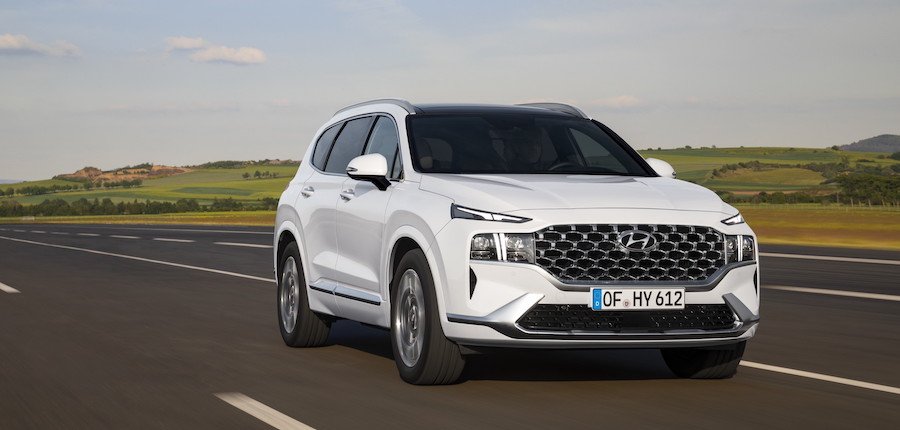Hyundai Santa Fe Hybrid Rolls In With Partially-Quiet Power, Second-Row Captain's Chairs

The electrified mid-size crossover packs a new 1.6-liter T-GDi gasoline engine, backed up by a 44.2 kW (60 ps / 59 hp) electric motor, which, in turn, takes its power from a 1.49 kWh lithium-ion polymer battery. The total output and torque stand at 169 kW (230 ps / 227 hp) and 350 Nm (258 lb-ft), which means that it has more power than the diesel and more torque than the 3.5 MPi.
Speaking of other powertrains, the 3.5-liter V6 MPi is good for 200 kW (272 ps / 268 hp) and 331 Nm (244 lb-ft) of torque and the 2.2-liter oil burner churns out 148 kW (201 ps / 198 hp) and 440 Nm (325 lb-ft). Both of them are mated to an eight-speed automatic transmission, whereas the hybrid uses a six-speed auto. The fuel economy is rated at 6.0 l/100 km (39.2 mpg US) in the Hybrid, 6.1 l/100 km (38.6 mpg US) in the diesel, and 10 l/100 km (23.5 mpg US) in the gasoline variant, Hyundai says, and they emit 137, 160, and 244 g/km of CO2 respectively.
A hybrid-exclusive feature of the 2023 Hyundai Santa Fe is the aero-type wheel set for the Elite and Highlander, which measures 19 inches in diameter, and improves performance, and fuel efficiency. Another highlight is the all-new optional six-seat configuration for the Santa Fe Hybrid Highlander, which brings second-row captain’s chairs for additional comfort on the go. Moreover, they also improve ingress and egress for the third row.
Pricing for the Santa Fe Hybrid will kick off at AU$63,000 (equal to US$40,725) for the Elite, and AU$69,550 (US$44,959) for the Highlander. The 3.5 V6 MPi and 2.2 CRDi, which are also available in the base and Active trim levels, start at AU$46,050 (US$29,768) and AU$49,550 (US$32,031) respectively. For the Active, Elite, and Highlander, the MPi will set buyers back at least AU$50,250 (US$32,483), AU$56,500 (US$36,523), and AU$63,050 ($40,757) respectively. The diesel, on the other hand, is priced at AU$53,750 (US$34,746), AU$60,000 (US$38,786), and AU$66,550 (US$43,020) for the Active, Elite, and Highlander, respectively.
